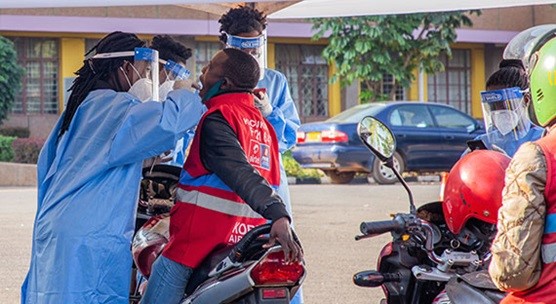In a conversation with IMF Country Focus, Rwanda’s Minister of State in Charge of National Treasury Richard Tusabe explains how his government is leveraging technology and grass-roots networks to fight the spread of COVID-19 and ensure financial support for households and businesses.
What has been the impact of COVID-19 on the country and what sectors suffered most?
Most of the impact has been on Rwanda’s services sector, which has been adversely affected by limitations on international travel and social distancing measures. The services sector is projected to grow by only 1 percent in 2020 due to lower trade (imports are expected to fall by 7 percent) and travel. Travel to Rwanda has fallen by 70 percent, which has caused a major impact on the tourism industry.
The agricultural sector, which is a major economic driver, was also impacted, further to the already expected decline because of adverse weather. A reduction in demand due to COVID-19 as well as a drop in international prices of export crops has made the situation worse. The industrial sector will also slow because of a drop in demand and delays in foreign direct investment in the construction sector.
Economic growth is projected to slow down to 2 percent in 2020 from 9.4 percent in 2019. In the medium term, the economy is expected to recover with growth reaching 6.3 percent in 2021, and back to its average growth of 8 percent in 2022.
Rwanda’s use of grassroots networks and local governments has been cited as an innovative way to assist households. How does this program work?
In the year 2000, Rwanda adopted the National Decentralization Policy—a “people centered” policy that uses grassroots networks and local governments to help lessen shocks on households and alleviate poverty. Household assistance is based on Ubudehe categorization, a long-standing cultural value of mutual assistance that was also adopted by the government as a poverty reduction strategy.
Ubudehe is a socio-economic stratification system that provides support for Rwandans in lower categories with social protection schemes such as cash transfer, public works, access to agricultural inputs, shelter, health, and education with the aim to graduate to higher categories. The process has been useful in identifying vulnerable households—through community-based identification, the Ubudehe database, and other means—that need assistance as a result of the crisis. In 2018, core social protection programs covered 6.5 percent of the population. These are being scaled up to cover more people in this period of pandemic.
How has emergency assistance been used to supplement and support the country’s economic and health response? Can you elaborate on any specific programs operating as a result of IMF funding?
In April 2020, the government established an Economic Recovery Fund that will be bolstered through emergency assistance from the IMF’s Rapid Credit Facility. The Fund will support the recovery of businesses hardest hit by COVID-19 to allow them to resume operations and safeguard employment. Efforts include refinancing hotels; providing working capital for large companies, microbusinesses and small- and medium-sized enterprises (SMEs); and setting up an SME guarantee scheme.
Can you highlight some examples of how the Rwandan government is leveraging digitization of healthcare to help respond directly to the public health crisis and provide support for households and businesses?
The government has effectively responded to the COVID-19 outbreak through existing and new innovative digital solutions:
- Contact tracing: Infections are being traced through the paperless Open Data Kit application that can be downloaded on a mobile device. Data is collected for analysis by outbreak investigation teams.
- COVID-19 surveillance: A health facility digital reporting surveillance system is used to monitor influenza-like illnesses and severe acute respiratory infections in real time to provide an early warning of suspected COVID-19 cases.
- Infection prevention: Robots have been used in healthcare settings to carry out simple tasks, like checking temperatures and monitoring patients, to reduce exposure of healthcare workers.
- Data visualization: A Geographic Information System (GIS) is being used to monitor COVID-19 cases at the household level to assess the need for implementing lockdown measures, focus public health interventions where there is evidence of community transmission, and monitor at-risk populations.
Do you expect the pandemic to increase inclusion of people in the financial system? Is the government seeing any upward trends in the use of digital financial services?
Financial inclusion measures have been taken to support people’s ability to save before the crisis. Financial digital services are proving essential as lockdowns have prevented some people from accessing cash at physical bank branches.
The government leveraged the country’s already high financial inclusion rate (93 percent) and took measures to limit the spread of COVID-19 by waiving peer-to-peer mobile money transfer fees, merchant payment fees, and transfers from account to mobile wallets or vice versa for three months.
The above measures limited cash usage, which raises the risk of COVID-19 transmission. For example, peer-to-peer transfers increased significantly from $11 million the week of March 15, 2020 to nearly $73 million in the last week of May 2020










